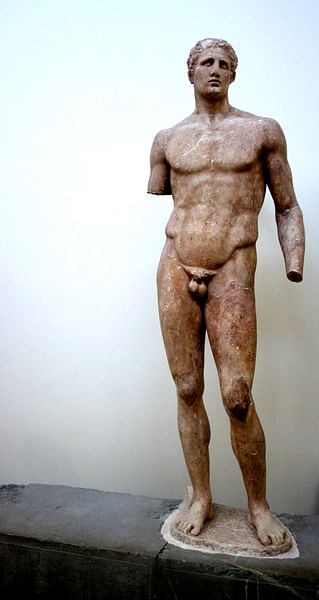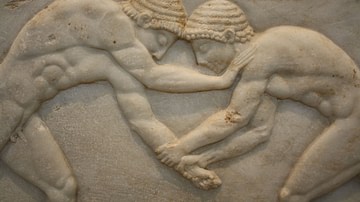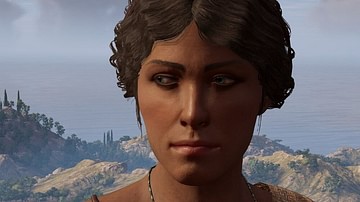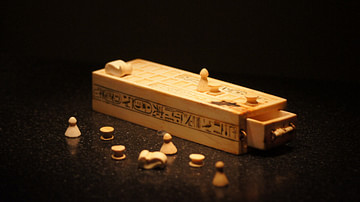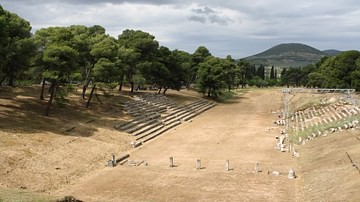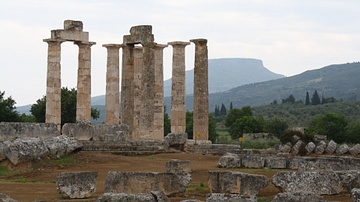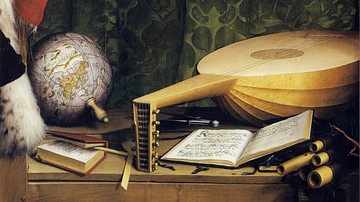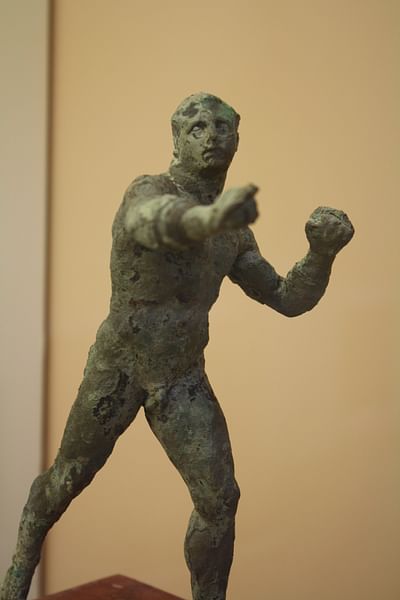
Pankration is an ancient martial art which mixes wrestling and boxing. The sport can be traced as far back as the second millennium BCE in the territory of ancient Greece. Its name derives from the ancient Greek words pan (all) and kratos (strength, might, power) and literally means “all of the might.” In 648 BCE, the Pankration was introduced as a sporting event in the 33rd Olympic Games where it joined boxing and wrestling in a category called “heavy events.” That special group of sports was reserved for the best athletes with the greatest strength and stamina.
The Pankration event was the ancient crowd's favorite sport. It was believed that a military training based on this formerly unarmed combat system helped the Spartans to excel in hand-to-hand fighting. Soldiers trained in Pankration were highly appreciated in the famous Macedonian Phalanxes as Alexander the Great was said to have given them priority in the recruitment of his army.
The Pankration in Mythology
Ancient Greek mythology appoints illustrious mythological figures as the first pankratiasts. Theseus, the founder-king of Athens, allegedly used techniques from that martial art to defeat the Minotaur (the half-human half-bull creature locked in the Labyrinth of Minos). Hercules is said to have won in Pankration contest in Olympia, as well as in another event organized by the Argonauts (the heroes that went on a quest for the Golden Fleece in Colchis). He reputedly used Pankration skills in one of his twelve labors too. Many Greek vases depict images of the hero defeating the Nemean lion with a specific strong lock believed to be part of the Pankration fighting methods.
The rules of Pankration
The ancient sources represent the Pankration as a full-contact combat sport that allows the use of various techniques such as striking, grappling, and wrestling. In fact, Pankration was a combination of boxing, wrestling, and other fighting arts with the only difference that there were virtually no rules. To bite and to gouge an opponent's eyes, nose, or mouth with fingers were the only off-limits once in the ring. Anything else - such as kicking in the belly and the genitals - was permitted and even expected.
The athletic event started after pulling lots and forming fighting pairs. At the end of every match, the lot drawing was repeated among the winners of the previous fights, and so on until one final winner has left. A sparring ended either by submission (the opponent would raise his index finger as a sign of being defeated) or by death. According to one story, the fighter Arrhichion of Phigalia won a Pankration competition at the Olympic Games literally dying in the ring. He was locked in a tight chokehold and had to break the ankle of his opponent in order to loosen the deadly clutch. At the same moment, though, when his competitor raised a finger for submission, Arrichion fell dead. Nevertheless, he was honored as a winner.
The sport had two main phases. During the first, called Ano Pankration (Upper Pankration), contestants had to fight upright. As the main goal was to knock down the opponent, punches, kicks and all kind of lethal blows were usually performed. The second phase, known as Kato Pankration (Lower Pankration) started with the first falling on the ground of some of the competitors. Here grappling, joint locking, and even strangulation were used as more effective methods of fighting on the floor.
Pankratiasts had the liberty to build their own fighting style. At the beginning of a sparring, some preferred to use short hooking blows called krocheirismos. A technique known as klimakismos (ladder trick) was often used to climb on an opponent's back, to lock legs tightly around his body and to strangle him from behind. That was probably the one that turned lethal for Arrhichion of Phigalia.
Very often the Pankration fighters got nicknames according to their preferred technique of defeating opponents. One pankratiast from the city of Sikyon was called “Fingertips” because of his habit to break his adversary's fingers at the start of a bout. Special local features also existed. The Spartans, for example, were famous for their heavy foot sweeps used to knock down their rivals. The Eleans, on the other hand, were quick on strangleholds.
Initially, the pankratiasts fought nude, with oiled bodies and bare hands. Later, they wore thong wrappings around their hands and forearms. When Pankration was adopted in Rome, fighters covered their genitals with loincloths and were even equipped with battle gloves (caesti) made with leather strips and filled with iron plates, blades, or spikes.
a training for the Spartans & army of Alexander
Developed out of an existing ancient combat system, Pankration was part of the army training of many Greek city-states. It was the core of the military instruction of the hoplites (the famous Greek infantry). The Spartans were particularly well-trained and excelled in that art. In their last stand at Thermopylae, they allegedly used Pankration skills as their final weapon. Once the 300 lost their armaments, they fought with bare hands, feet, and teeth, relying on their abilities to use unarmed fighting techniques.
Alexander the Great also highly appreciated such military proficiency. He often sought to attract pankratiasts in his famous Macedonian Phalanxes as he regarded soldiers trained in Pankration as a valuable army asset. One Athenian Pankration champion from the Olympic Games in 336 BCE was quite popular among the Macedonian army where he was on a service. His name was Dioxippus, and the historian Curtius Rufus in his “Histories of Alexander the Great” informs us that one day he was challenged to a one-to-one combat. His adversary was one of Alexander's best soldiers, known as Coragus. The Macedonian ruler appointed a match between them in one of his banquets organized in Persia. In the bout, Dioxippus showed up naked and armed only with a club. Coragus presented himself in full armor. After а short fight, the Athenian champion defeated his armed and skilled opponent using only Pankration techniques. He could have killed him if it had not been for Alexander's intercession.
The Macedonian Phalanxes reportedly contributed to the spreading of Pankration to the East. It is suggested that following Alexander's conquests over Europe and Persia, the Greek unarmed fighting system eventually reached the Indus Valley. Some researchers even speculate that by practising their ancient military art along their route, Macedonian soldiers influenced the Indian combative art “Vajra Musti” and, ultimately, had an impact on the martial arts in China. According to Eastern tradition, the Chinese fighting systems evolved from Indian Buddhist doctrines that taught early Indian combative arts.
